1979年,草间弥生在哪里?在东京的精神疗养院里。草间弥生(Yayoi Kusama)的头衔和称号有很多,“日本国宝级艺术家”、“ 波点/圆点女王”、“前卫女王”、“精神病艺术家”、“怪婆婆”等等,都 是她。出生于日本长野县松本市,毕业于日本长野县松本女子学校的草间,在 1957年移居美国纽约市,并开始展露她的前卫艺术创作,成为纽约前卫艺术的 先锋人物,影响力堪与波普艺术领袖安迪·沃霍尔(Andy Warhol)匹敌。
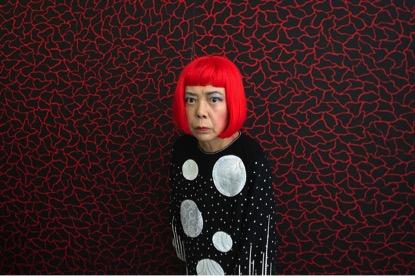
而精神疾病,却是比这些荣耀的头衔陪伴她更久的东西。
草间弥生的童年乏善可陈,远称不上美好。压抑的家庭氛围,保守的社会环境,对她的艺术爱好毫不支持的母亲,和从小精神衰弱而不断出现的幻觉,让草间弥生在1957年逃离了家乡,来到了美国。她说,“当时我非常清楚,如果想在艺术上走得更远,必须逃离日本这个封闭的地方。我必须越过家乡这座高山,才能触摸到外面的世界。”在纽约取得艺术成功的故事早已世人皆知,无需赘述。然而名利双收也并没有 让草间弥生摆脱精神疾病的困扰。直到1962年,草间弥生邂逅了美国近代著名 艺术家、雕塑家和实验电影先锋人物约瑟夫·柯内尔。
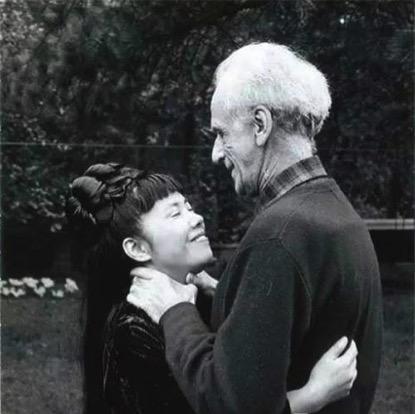
约瑟夫是一位虔诚的基督徒,他们除了接吻,并没有性的接触。两人一直相伴 ,直至1972 年柯内尔去世。十年的幸福是奢侈的——爱人的去世给草间弥生以 沉重打击,她的精神问题愈发严重。1973 年,柯内尔去世后第二年,她从纽约 回到日本,离开艺术家与评论家,逃出媒体视野,独自一人在精神疗养院生活 。草间弥生还在疗养院旁买下一栋楼做工作室,“那是我一生最大一笔开销。 ”白天,她到附近的工作室“上班”,晚上又回到疗养院。她极少外出,也避 免会客,不逛商店,不会使用电脑和手机,过着与世隔绝的日子,在助手搀扶 下创作至今。《纽约时报》评价她60年代以《无限的网》为代表的作品:“她的作品完全排 除个人情绪,以一种偏执的重复令人感到迷惑。”(《无限的网》(1959)于 2008年以近600万美元的拍卖价格成交。)
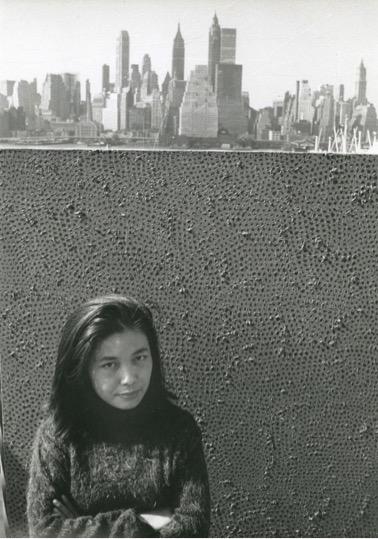
而1979年的草间弥生,在经历了荣耀与财富,又经历爱人逝去之痛后,已淡化了年轻时无所畏惧的疏离感。本次杜若云章便聚集了这一时期草间弥生的多幅 极其珍贵的原作——这些画面似乎多了一些“人情味”。相较于早期抽象的点 和线的重复,草间弥生这时期的作品显得平易近人了许多。题材上来说,具象 的物体出现在了她的作品中:一朵花也好,一个想象中的国度也好,或是旅途中的风景,皆是艺术家记忆中的片段。从创作手法上来说,这些作品充满了前所未有的“手作”感,个性化的笔触在纸面上变化多端,每一笔都是艺术家个人情感的流露;而纸本水墨这种载体的特殊质感,也让人感到与这位“古怪”的艺术家更加亲近了一些。
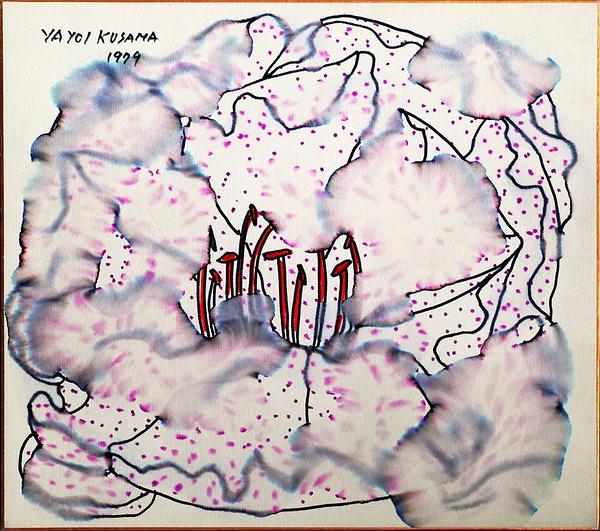
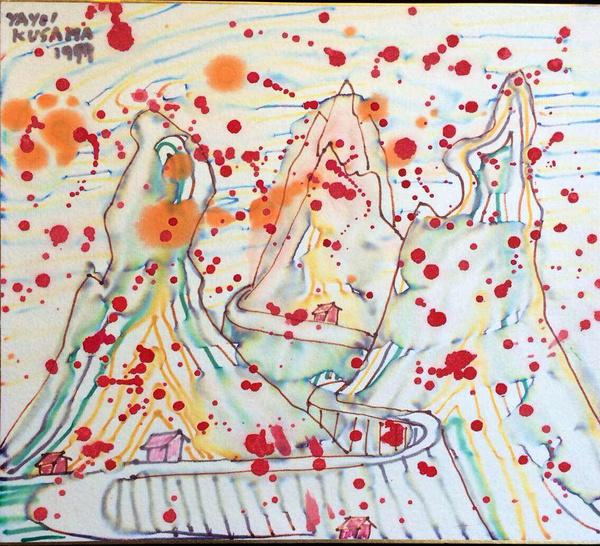
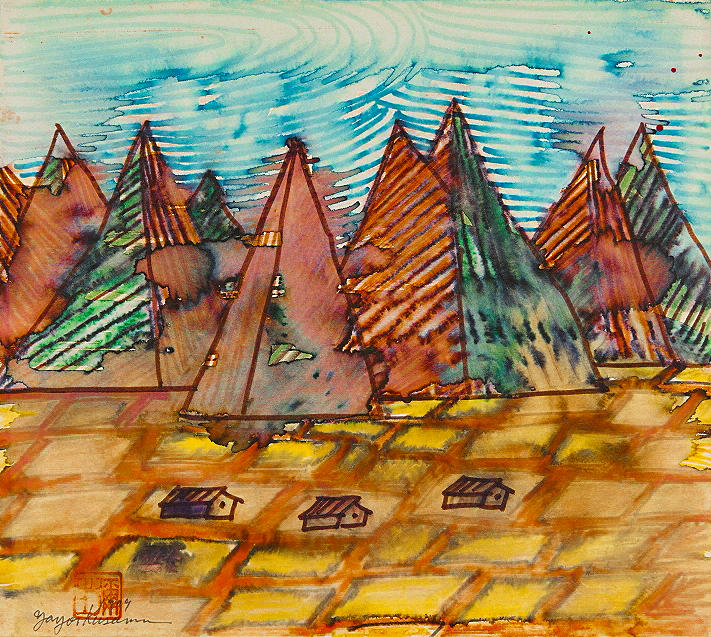
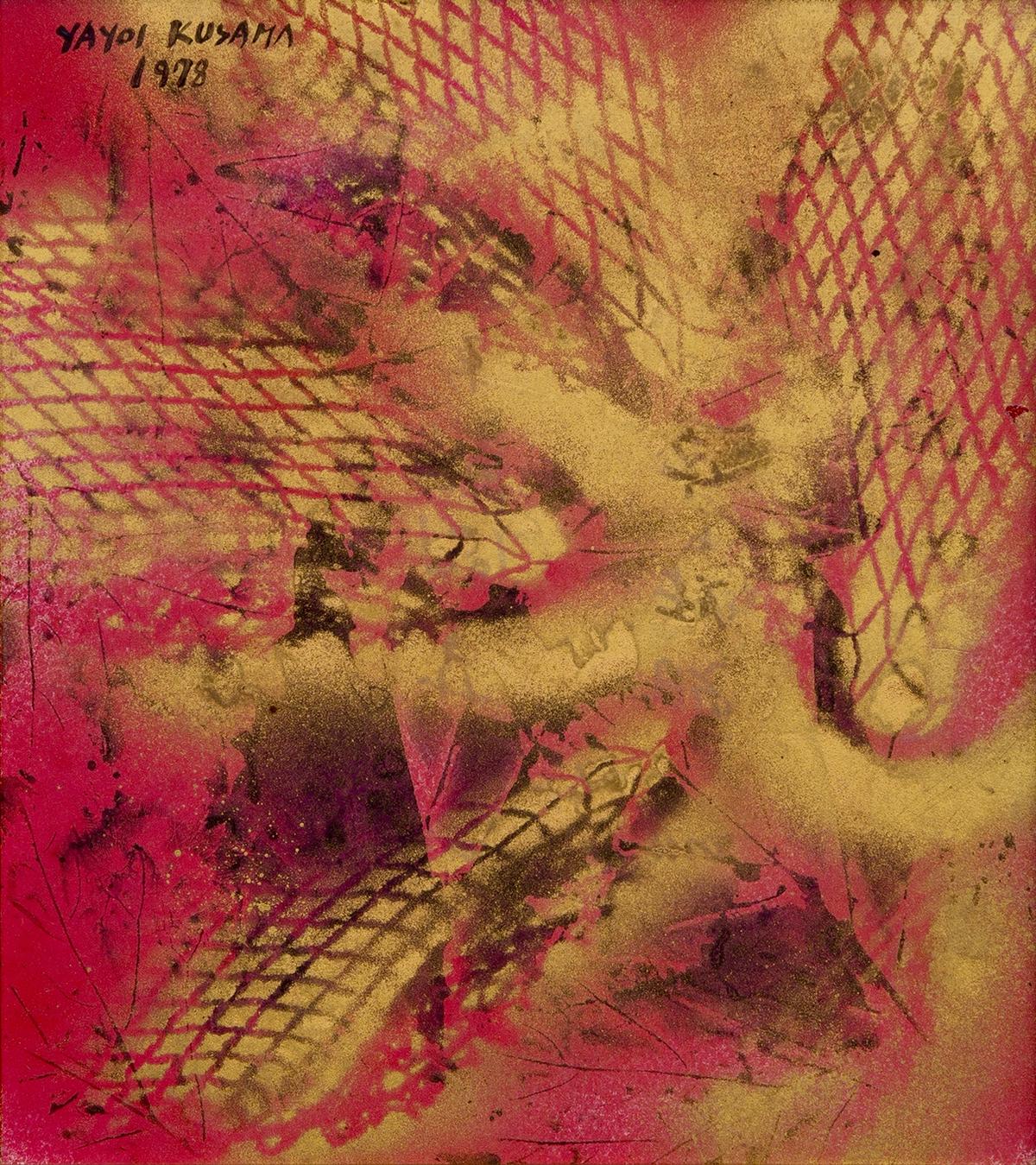
1979年也是草间弥生开始创作版画的一年;本次展览中也将一并呈现草间弥生 的系列版画作品。其中最具代表性的,当仁不让便是她的波点南瓜系列。另外 还有一件十分难得的艺术家自画像。
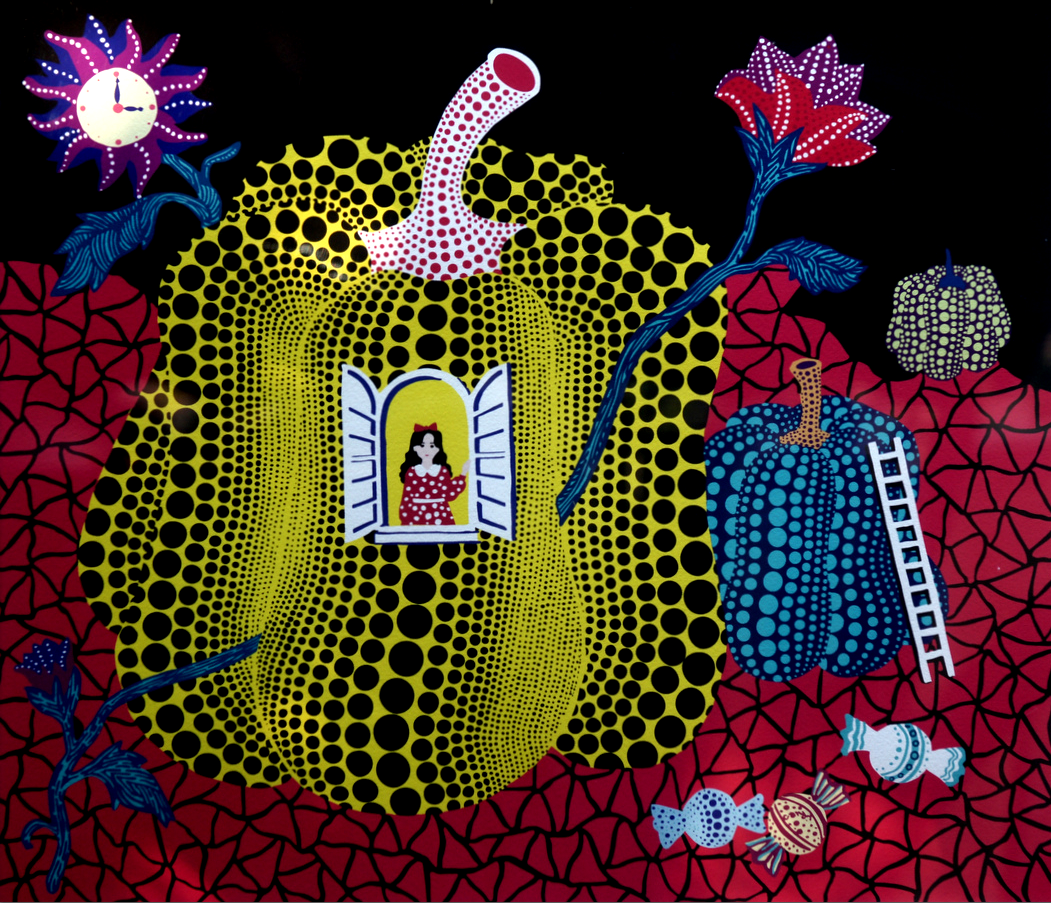
对南瓜的这种可谓偏执的迷恋,始于草间的童年记忆。爷爷经营的农场里的南瓜,对幼小的草间弥生来说,就像某种宗教信仰中的神,带给她喜乐和安慰——抚慰人心、让人快乐、几乎带着神性的这颗南瓜,显然已经远远超出了一颗蔬菜的意义。与版画南瓜一同展出的还有一件南瓜雕塑的独版原作,精致可爱,让人能充分感受到草间弥生的波点南瓜的奇妙,并理解为何她的艺术创作在时尚界同样大受欢迎。
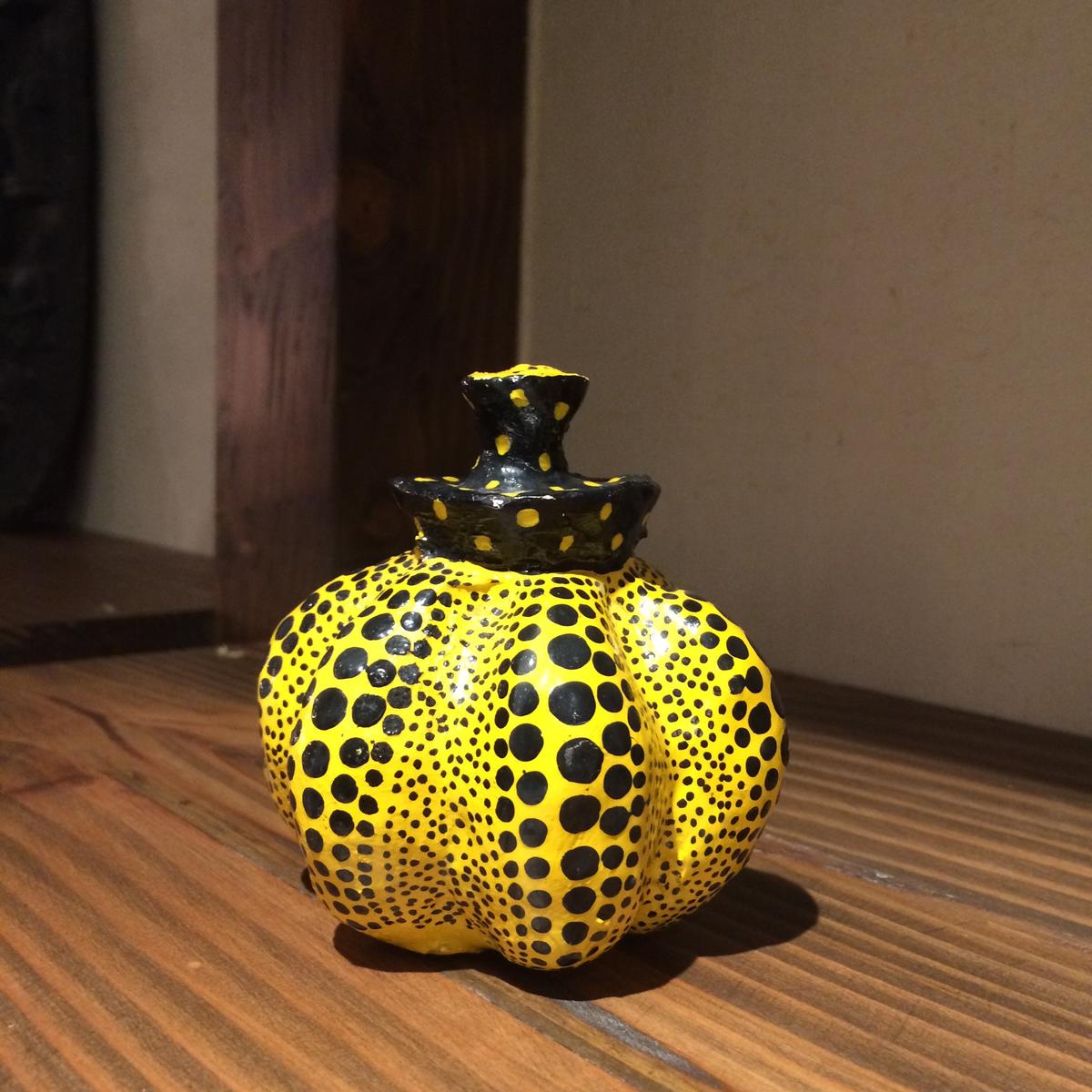
2009年6月底,英国《泰晤士报》公布20世纪最伟大的200 名艺术家调查结果。毕加索、塞尚名列第一、第二,日本有4 位艺术家上榜:草间弥生、村上隆、杉本博司和野口勇。相比村上隆等人,“怪婆婆”草间弥生比他们提前了整整三四十年。而杜若云章目前正在举办的村上隆个展,因反响热烈,已计划部分作品延续展出,与草间弥生的作品一同展出,让大家在同一空间感受被称为“日本三剑客”中这两位的不同宣扬与魅力。“过去我的创作主题多聚焦‘生与死’,现在我更关注的主题是对宇宙神秘性的敬畏,幸福社会、爱与和平的愿望。这里面还包含着对于人类使命、对爱的认识,我经历了一个经过光、爬上楼梯、进入宇宙的过程,我多年来的痛苦和辛苦都在这一刻得到解脱。中文成语‘生老病死’是我喜欢的词,我一直在想自己的生命会以怎样的形式结束,希望上天看我,是完美的人生。”就让我们用草间弥生的这番肺腑之言作为该文的结尾,同时作为本次展览的开始,引导你探索一个不一样的草间弥生。Where is Yayoi Kusama in the year of 1979? She is in the Seiwa Hospital for the Mentally Ill in Tokyo. Yayoi Kusama has had many titles and names for her fame, such as “a national treasure of Japan”, “queen of polka dots”, “queen of the avant-garde”, and “psycho artist”. She was born into an upper-middle-class family of seedling merchants in Matsumoto, Nagano; later in life she moved to New York for her debut of avant-garde art and became the pioneer of the New York Art Circle, influencing contemporary big names such as Andy Warhol and Claes Oldenburg. But mental illness is something that accompanies her far longer than her fame and wealth. Kusama’s childhood is not a happy story. A depressing family with a mother who showed no support to her dreams of art and a conservative social environment urged her to escape from home to the big city of New York. She said, “I was well aware that if I want to pursue a career in arts, I had to escape from the suffocating Japan and to the outside world.” The story of her gaining success as an artist in New York is all history, with no need for elaboration. However, all the fame and wealth did not free Kusama from the suffering of mental illness, until 1962 when she met the well-known American contemporary artist and avant-garde filmmaker Joseph Cornell. They had a passionate, yet platonic relationship until Cornell’s death in 1972. The death of her lover made a powerful strike on Kusama’s mental stability. In 1973, a year after Cornell’s passing away, Kusama left New York and went back to Japan, escaping the eyes of fellow artists, art critics and the media. She ended up living alone in a hospital, in an almost isolated-from-the-world way. The New York Times once commented on her 60s works led by Infinite Net, “her works completely devoid personal emotions, confusing the viewers with a paranoid repetition.” After all the spotlights, the applause, and the pain of losing her lover had withered, the Kusama of 1979 let loose the fierce isolation and fearlessness in her paintings. Je Fine Art Gallery has gathered a precious collection of her original works from that period. It is apparent that there is an increasing sense of humanity and personal emotions in these works. From the perspective of subjects, they portray more figurative objects instead of the abstract images of her earlier works. When it comes to techniques, the brushworks of ink vary on the paper, every stroke giving different textures and expressing the artist’s emotions. 1979 is also the year when Kusama started making print works. We will include those as a part of the display as well. Among the print works the most distinctive ones are, without doubt, the series of the pumpkins. Along with the print pumpkins, we are going to display an original sculpture pumpkin of the artist with her autographs at the bottom. Examining this work, you will get a sense of why Kusama’s art is widely held in the fashion world. Yayoi Kusama, along with Takashi Murakam and Yoshitomo Nara, is honored as “The Big Three of Japanese Contemporary Art”. Je Fine Art is currently running a show of Takashi Murakam and due to the enthusiastic response from the audience we are going to prolong the display of a part of the collection into this new exhibition!








